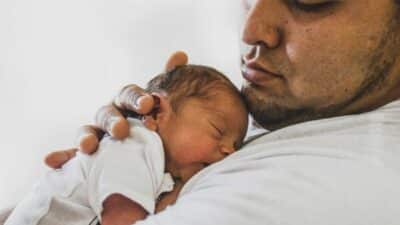Assisted reproduction (IVF / ICSI) — procedure, risks and costs
General information on artificial insemination
In vitro fertilization is one of the most important medical advances and often the only hope for many childless couples to become parents after all. IVF has already supported millions of people around the world in getting pregnant. In Germany alone, 250.000 children have been conceived this way [1].
In the meantime, several methods of reproduction are practised, which are very individual and should only be used after a detailed diagnosis of both partners. In this article we look at the procedure, the risks and the costs of the in vitro fertilization (IVF) and its special form of intracytoplasmic sperm injection (ICSI).
Of all the possible methods, in vitro fertilisation (IVF / ICSI) is one of the most complex and usually takes several weeks. Several steps are carried out which, apart from the actual fertilisation, are the same for both IVF and ICSI.
Let’s take a closer look.
In vitro fertilisation: Procedure
Hormone treatment (duration: approx. 9 — 11 days)
During a natural menstrual cycle, the female body normally produces a single egg that can be fertilized by the male sperm after ovulation.
However, in order to increase the likelihood of pregnancy during IVF, the woman often has to undergo hormone therapy. This involves first stimulating the maturation of several eggs by taking certain hormones, and then inducing ovulation about nine to eleven days after the stimulation begins.
The hormone dosage depends on the ovarian reserve. How large this reserve is can be determined using the level of the Anti-Müllerian Hormone (AMH). You can test your AMH level from the comfort of your own home with our self-test.
Puncture
The next step is to use a fine needle to remove eggs that are ready for fertilization (puncture).
To avoid possible pain and risks, the woman is often put under a short anesthesia or half-sleep. One side effect that could occur is slight bleeding. But don’t panic, this is quite normal!
Fertilization in the laboratory
In this step, the actual fertilization takes place. As mentioned earlier, the process differs in both methods and it depends on the quality of the sperm which method is best for the couple.
Fertilization with IVF
After the puncture, the female eggs are put into a test tube with the male sperm, where in the best case they find each other independently. Hence the term “test tube fertilization”.
Thus, the actual fertilization process takes place in exactly the same way as in the partner’s body [2]. The chances of pregnancy after IVF are about 15 to 20 per cent per treatment cycle.
Fertilization with ICSI
The ICSI method offers a better chance of having a child for all couples whose men suffer from fertility problems. This method is best suited when…
- there are insufficient sperm in the man’s ejaculate
- the sperm are too immobile and unlikely to reach the egg on their own.
In this case, the doctor uses a micropipette to inject individual sperm into the collected female eggs. Fertilization takes place under a special microscope and can therefore be strictly controlled. If the process is successful, the fertilized eggs can be transferred into the woman’s body between two and six days after the puncture [2].

What are the chances of success?
This is probably the most important point that concerns many involuntarily childless people. According to the Federal Centre for Health Education, the birth rate for IVF and ICSI is around 15 — 20% per treatment cycle. Across Germany, 20.3% of all IVF and 19.5% of all ICSI procedures ended in successfully in 2016 [1]. After a cryotransfer (transfer of the frozen fertilized egg or frozen sperm) it is still possible to have your own child, but the probability drops to 17.7%.
» Here you can find out more about cryo-transfer and social freezing.
However, it is important to keep in mind that the above values are only indicative and vary from situation to situation. Among other things, the age of the woman is decisive for the success of both treatments. For example, the probability of pregnancy is over 40% per embryo transfer up to the age of 30, while from the age of 43 it is only 15% [1].
And here is another helpful statistic: Since fertility treatment is usually associated with a highly emotional and financial burden, many patients drop out early. However, the most recent studies give hope! According to the German IVF Register, the probability of pregnancy increases after several treatment cycles. It is 30% after one attempt, 61% after the third one and rises to 79% after the fourth transfer cycle [1].
How much does IVF / ICSI cost?
The cost of fertility treatment is high and can be up to €4,000 per IVF and up to €5,000 per ICSI treatment cycle [3]. When you consider that many couples need several attempts at once, they have to dig pretty deep into their pockets. However, if you live in Germany and have statutory health insurance, you share 50 % of the costs with your health insurance company for a maximum of three attempts at IVF or ICSI treatment.
Nevertheless, the statutory health insurers only contribute under certain conditions. These are:
- In vitro fertilization must be medically necessary and verifiable.
- The couple must be married.
- Only sperm and eggs from both spouses may be used.
- The age of the partners must be between 25 — 40 years for the woman and between 25 — 50 years for the men.
Private health insurance companies have different conditions which should be clarified individually.
What are the risks?
As with any medical intervention, physical and psychological complications can occur during fertility treatment. Therefore, the first step would always have to be a detailed consultation and consideration of all the advantages and disadvantages.
Risks of hormone therapy
Hormone therapy can be both emotionally and physically stressful. In some cases, it can lead to so-called overstimulation, in which the ovaries “overreact” to the treatment, by enlarging greatly and producing too many hormones. It can also lead to water retention in the abdomen and be accompanied by syndromes such as nausea, shortness of breath and tension.
Multiple pregnancies
The transfer of multiple embryos in IVF and ICSI can also lead to multiple pregnancies and place more severe demands on the woman’s health. According to the German IVF Register, the probability of carrying twins is 21.1% and 0.5% for a triplet pregnancy. This puts Germany well above other European countries.
Stress
Psychological and financial stress are other important aspects that should not be neglected under any circumstances.
Will the embryo implant? How will the pregnancy progress? Is there a risk of miscarriage? The uncertainties after the embryo transfer can understandably take a lot out of the couple and cause a real emotional rollercoaster. No wonder, all hopes are often pinned on the treatment!
In addition, lifestyle, daily routines and even sex life have to be drastically changed and adapted to the treatment plan.
To ease this nerve-wracking phase, it may be a good idea to seek professional help and have a psychologist accompany you on this journey.

Conclusion: assisted reproduction
In summary: The decision for or against in vitro fertilization is difficult. On the one hand lie the uncertainties and challenges that may arise: financial, health and emotional burdens. On the other hand is the longing for a child of your own. Which of the sides predominates is very individual and depends entirely on the potential parents’ possibilities.
Important: Such a life-changing step should not be guided by emotions alone. Fortunately, you can use data and medical tests to make a well-considered decision.
Take the time to find a specialist you can rely on. A good doctor will provide you with all the information you need and guide you through this crucial phase of your life. We work with the best Fertility Centers in Europe and would love to advise you!
Here you can find out more about the possibilities of in vitro fertilization in Germany, the Czech Republic, Poland or Spain.
About Fertilly
At Fertilly, we have made it our mission to accompany couples (homosexual and heterosexual) and singles on the way to fulfilling their child wish. In doing so, it is important to us to create transparency in the area of fertility services, to provide information and knowledge on the topics of pregnancy and fertility and to help you to find the most suitable Fertility Center. Through cooperation with first-class Fertility Centres and clinics in Europe, enquiries about Fertilly are given preferential treatment. This means that our patients avoid the usually long waiting times and get appointments more quickly.
If you would like more information about Fertility Centers, success rates and prices, please contact us using this questionnaire. We will advise you free of charge and without any obligation.
-
Answer the first questions in the online form in order to book an appointment. This way we can better address your needs during the conversation.
-
We will find the best contact person for your individual needs. Schedule 20 minutes for the consultation.
-
We will introduce you to the right fertility clinic from our network, make an appointment and accompany you until your wish for a child is fulfilled.
Sources:
1. DIR (2018): Jahrbuch 2017. In: Journal für Reproduktionsmedizin und Endokrinologie; Sonderheft 1.
2. Bundeszentrale für gesundheitliche Aufklärung (2017), Sehnsucht nach einem Kind. Möglichkeiten und Grenzen der Medizin.
3. Passet-Wittig, J., Ruckdeschel, K., Schumann, A., Bujard, M. (2018), Reproduktionsmedizin und Familienplanung.










